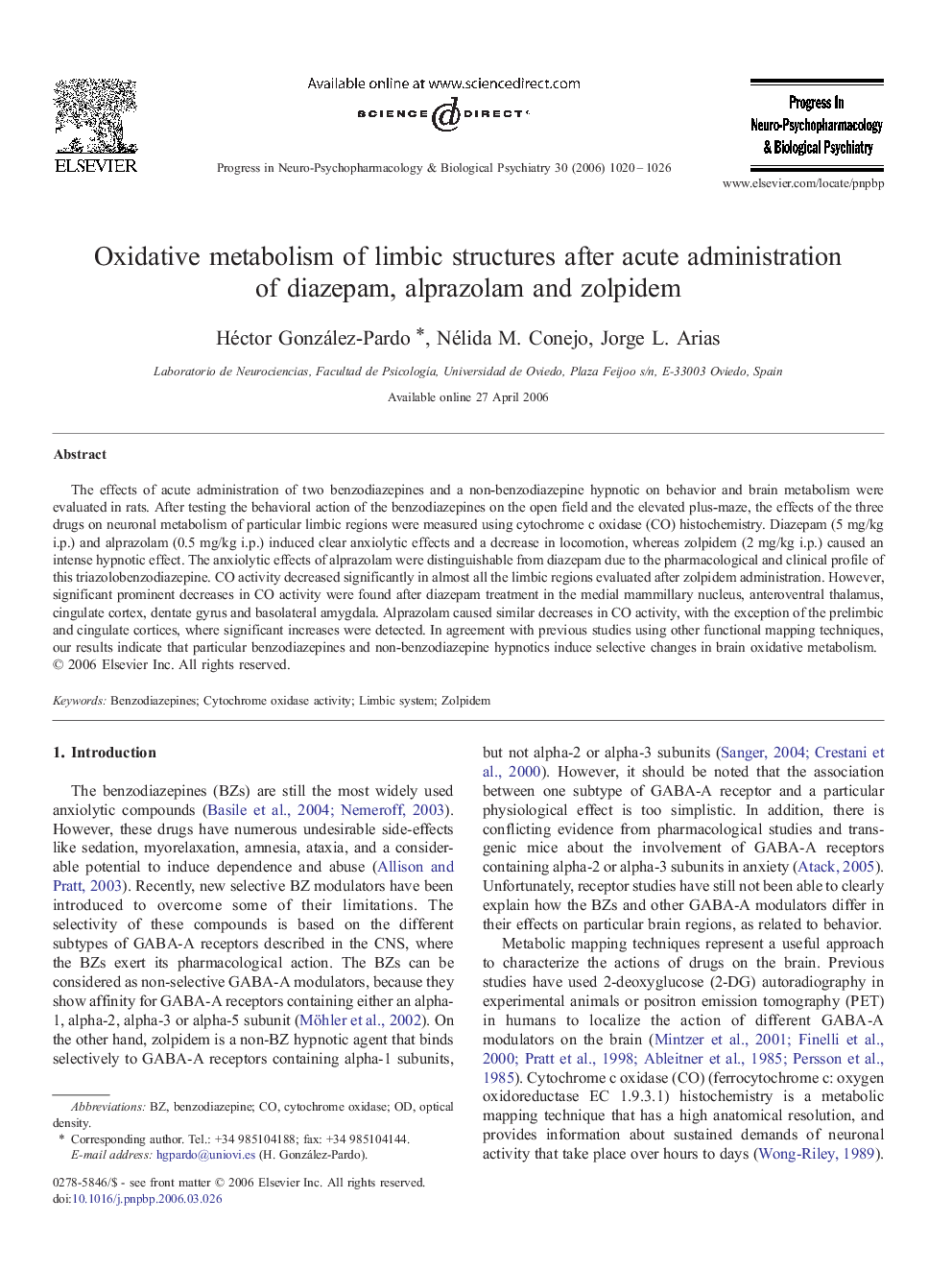| Article ID | Journal | Published Year | Pages | File Type |
|---|---|---|---|---|
| 2566770 | Progress in Neuro-Psychopharmacology and Biological Psychiatry | 2006 | 7 Pages |
The effects of acute administration of two benzodiazepines and a non-benzodiazepine hypnotic on behavior and brain metabolism were evaluated in rats. After testing the behavioral action of the benzodiazepines on the open field and the elevated plus-maze, the effects of the three drugs on neuronal metabolism of particular limbic regions were measured using cytochrome c oxidase (CO) histochemistry. Diazepam (5 mg/kg i.p.) and alprazolam (0.5 mg/kg i.p.) induced clear anxiolytic effects and a decrease in locomotion, whereas zolpidem (2 mg/kg i.p.) caused an intense hypnotic effect. The anxiolytic effects of alprazolam were distinguishable from diazepam due to the pharmacological and clinical profile of this triazolobenzodiazepine. CO activity decreased significantly in almost all the limbic regions evaluated after zolpidem administration. However, significant prominent decreases in CO activity were found after diazepam treatment in the medial mammillary nucleus, anteroventral thalamus, cingulate cortex, dentate gyrus and basolateral amygdala. Alprazolam caused similar decreases in CO activity, with the exception of the prelimbic and cingulate cortices, where significant increases were detected. In agreement with previous studies using other functional mapping techniques, our results indicate that particular benzodiazepines and non-benzodiazepine hypnotics induce selective changes in brain oxidative metabolism.
